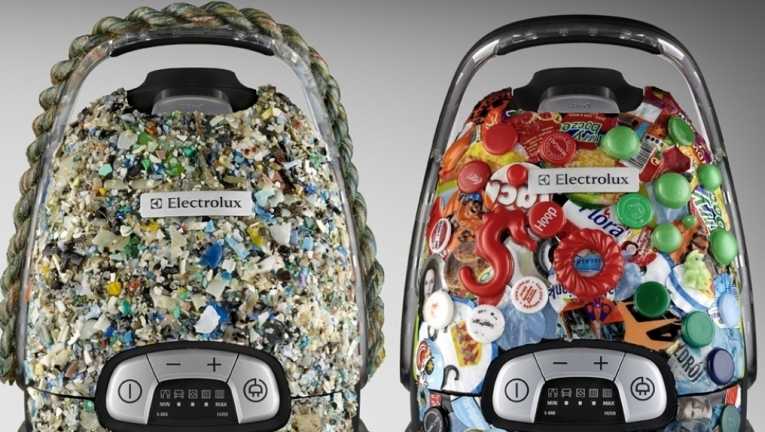A new use has been found for some of the plastic waste contaminating the world's oceans. Five vacuum cleaners have been made from plastic waste, one from each of the oceans where the plastic was collected.
The Vac From the Sea Initiative, launched by Electrolux, is aimed at raising awareness of plastic waste in the ocean and inspiring consumers to recycle.
"Our intention is to bring awareness to the situation and the need for better plastic karma," says Cecilia Nord, Vice President - Floor Care Sustainability and Environmental Affairs. "The vacuum cleaners embody the plastic paradox: oceans are full of plastic waste, yet on land there is a shortage of recycled plastic for producing sustainable vacuum cleaners."
The vacuum cleaners were built using the same basic design of engine, chassis and bag compartment, but the hood and hub caps have been filled with different types of plastic, according to the predominant plastic waste found in each of the five oceans represented.
For example, in the Pacific Vac From the Sea, plastic grain was collected from the beaches of Hawaii. These small plastic particles are often swallowed by fish mistaking them for food. All the collected plastic gravel had bite marks or was covered with barnacles and annelid worms.
Plastic in the Indian Ocean Vac consists mainly of fishing gear, nets and bags that had to be cut from coral reefs off Thailand by divers. There was also a lot of household waste such as detergent and drink bottles, and floating chunks of Styrofoam.
In the Mediterranean, plastic waste collected from beaches at St Cyr-sur-Mer, France, was mostly litter from tourism such as food containers, beach toys and drink cans. This plastic was cut into pieces and attached to a thin shell of recycled plastic.
The Baltic Vac consists of plastic collected from beaches in Sweden, Poland and Latvia, and includes ice cream containers, flip flops and bottle caps.
Similar plastic packaging from Skagerrak, Sweden, was used to make the North Sea Vac. An Atlantic edition is currently being designed, using plastic waste trawled from UK waters.
The vacuums cannot be mass-produced at present because of the logistics of collecting and sorting ocean plastic, says Cecilia Nord. Electrolux considers only one type of plastic to meet its quality and safety standards.
"However, as part of our commitment to researching new materials, we should explore how the ocean plastic might be used in the future, and one such step is to make a single concept vac that we can auction out for research," she adds.
The Vacs From the Sea will shortly be taken on tour to be shown to industry and environmental organisations.










